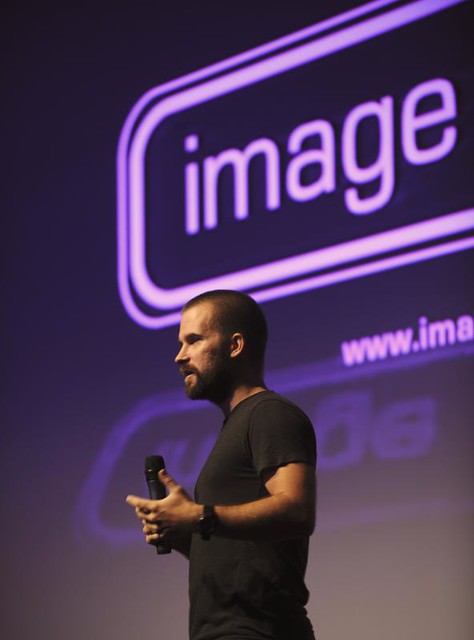Image Metrics is the creator of Faceware, an award-winning facial animation technology used throughout the games, film and entertainment industries to streamline animation. Jay was at BAF to talk about how facial animation technologies can create an enhanced gaming experience and tackle the most demanding of schedules and rigging processes.

According to Jay, the biggest challenge in games development is realistic facial animation, and there are two things which impact on the developers' ability to meet this challenge: cost and performance; and while facial motion capture is fast and gives a great result, there's a lot of set up and equipment involved.
Faceware has tried to take all these challenges head on and give users a turnkey solution to create good facial animation. To illustrate this this, Jay gave a demonstration of the Faceware workflow.
A trained animator, Jay worked on facial animation for Grand Theft Auto. He's had a lot of experience with Faceware and tells us with confidence that it's fun, easy to use and gives you a huge amount of artistic control.
There's more to motion capture than an animator creating an entire performance - their animation augments the work of an actor. With Faceware, the animator still gets to define what that performance will look like.
Your instinct when working with a new tool is to panic, but with Faceware, you're still using the software you know and love. Whatever type of rig or character you're using can be driven by Faceware - it's designed to neatly plug in to whatever you're doing.
Lip sync can be a really big problem for animators. It doesn't matter how good your rig or your rendering is if your timing is off. Faceware makes this much easier - you can let the software take care of all the heavy lifting and spend 90% of your time polishing the animation.
Plus, this is not a traditional animation workflow because you're not posing the whole face on every frame, which means you can get a lot more animation done in less time.
Faceware separates the face into three groups:
- Eyes - what direction they're looking and the movement of the eyelids
- Brows - everything above the eyes
- Mouth - everything below the cheeks and around the mouth
He demonstrated Faceware autopose. This tool knows where the key poses are, so you can go straight to them and set up the poses to match the performance. Using a simple example of two poses (blink and look), with about 30 seconds of work, Jay had created 277 frames of blinks.
While it's not a particularly difficult job to hand animate eyes, all the subtle little eye darts might be missed by an animator. Faceware picks these up - another example of how the software can save you time and still result in a more realistic animation.
There was a workshop later on in the day to give delegates the opportunity to play with the software. If you want to have a go, you can download Faceware for free. The cost comes in when you upload your files, but the good news is that student rates are available.
Did anyone attend the workshop? What did you think of Faceware?


0 comments:
Post a Comment